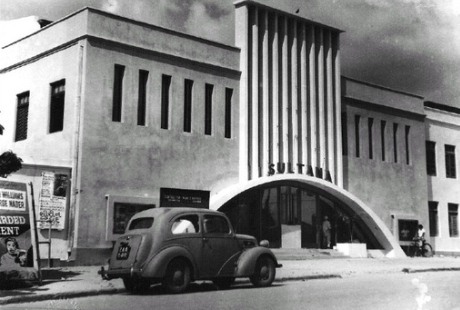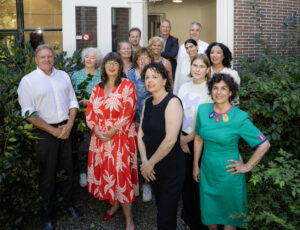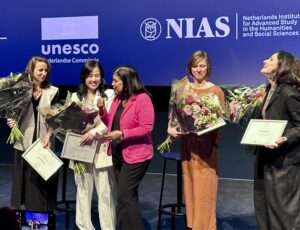Talk of the Town
From at least the 1950s and indeed, in some towns well before, thousands of people would crowd the streets of Tanzanian cities making their way to and from the movie show. On Sundays in particular, it was not uncommon to find five to ten thousand men, women, children and families making their way – largely on foot – across the city to see the hot new Indian release. Such was the popularity of movie-going and of the social experience of being part of such a large crowd that tickets frequently sold out, and so there was a vibrant black market in cinema tickets from the colonial era right through to socialist times. Films became the cornerstone of urban conversations as friends, neighbors and complete strangers debated the meaning and artistic style of whatever they had just seen on the big screen. On a continent where literacy had always been the preserve of an elite few, films were accessible for all, and provided a narrative spark that lit debates about a range of issues from morals, music, fashion and style to class exploitation, police corruption and romantic love. Cinemas were nodes of urban citizenship, bringing together a diverse range of the population in the same public space and into conversation across class, gender, age and religious divides.
900-Seat Picture Palaces
In a surprising twist on common perceptions of ‘under-developed and backward Africa’ the book I wrote during my NIAS fellowship illuminates how Tanzanian social experiences were actually commensurate with larger global trends in technological appropriation, urbanization, the rise of commercial public leisure and engagements with transnational media flows. ‘Globalization’ may only have emerged as a new buzz-word in academia in the late twentieth century, but this study demonstrates that the transnational movement of goods, ideas and technologies had long been part of the mental and material worlds of East Africa. And Tanzanians were at the center of this process.
Local men brought the new technology of moving-pictures to East Africa in the early 1900s, and by 1920, the cities of Zanzibar and Dar es Salaam boasted several gorgeous 900-seat picture palaces offering nightly shows. By the 1950s there were 40 cinemas operating across the nation. Building on pre-colonial trade links spanning the Indian and Atlantic worlds, local entrepreneurs based in Zanzibar developed networks of global film supply which stretched to India, Egypt, Europe, Japan, Hong Kong and the USA in order to satisfy the ever-growing local demand for engaging nights at the movies. Unlike so much existing literature on African economic and technological history, my book tells a story where neither whites nor European forces had anything to do with African development.
The Sultana Cinema, one of Zanzibar Town’s picture palaces, in the 1950s. Photography by Ranchhod T. Oza. Courtesy of Rohit R. Oza, Capital Art Studio, Zanzibar.
India as Source of Innovation
This book joins a growing body of new scholarship whose aim is not only to integrate African experiences into the analysis of technologies but also to de-center our conception of Euro-America as the node from which technical innovation flows. In this case, India was in fact a much closer and more important source of mechanical systems and media products than any place in the west. I emphasize how these south-south flows provided alternative circuits for modernities development both within the industry and in terms of media images projecting modern subjects. Yet even when India was the source, Tanzanians never simply accepted what they were given. They constantly engaged with, questioned and transformed global technologies and cinematic products. For example, the way in which cinemas were built, how projectors were repaired or celluloid sliced were all things determined by local conditions, knowledge and aesthetics. The ability to innovate was key to the daily survival of exhibitors and projectionists.
Independent
In the USA, Britain and South Africa the movie-industry has long been dominated by just a few corporate entities who ran the show, putting on the same films in every town across the nation. In Tanzania, both exhibitors and distributors remained independent of each other and also of international chains. In my book, I explain why this was the case and illustrate how Tanzanians capitalized on this independence, thereby delivering a uniquely diverse range of media product to local audiences. Unlike my own experience growing up in the USA, where all we ever got to see were Hollywood films, my contemporaries in Tanzania were able to view the best films from India, Egypt, Europe, Japan and Hong Kong. If they did not like the film styles of one region, they had many others from which to choose.
About the Author
Laura Fair is Associate Professor of History at Michigan State University. She was a NIAS Fellow 2013/14, working on a book project that explores the history of cinemas and movie-going in Tanzania and Zanzibar (1900-2000). She relished the opportunity to live in the Netherlands, where regular film festivals and a diverse array of films are always available.




